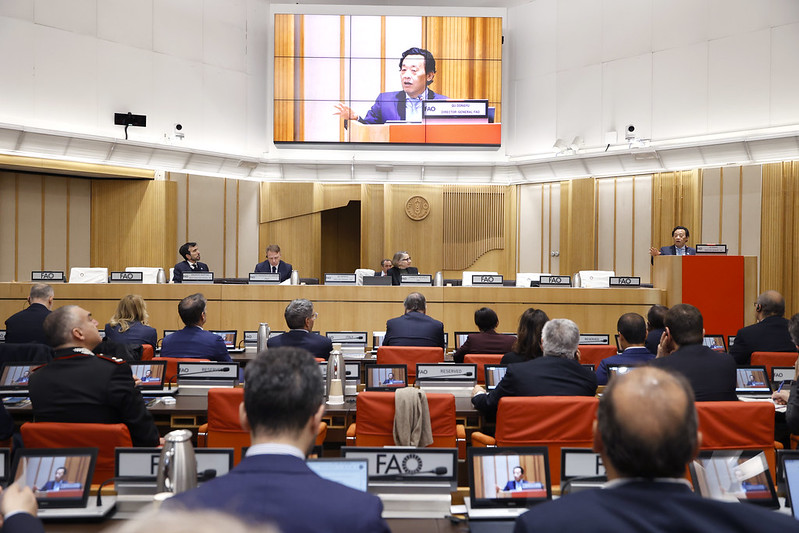
FAO Director-General QU Dongyu opening the International Conference on Geographical Indications 2025. Photo: ©FAO/Giulio Napolitano.
Rome: A geographical indication (GI) is a sign indicating that a tradeable good has qualities linked to its specific place of origin. Therefore, GIs have the potential for the preservation of cultural identity and heritage and the protection of traditional know-how, as well as a positive impact on the environmental and social levels.
At the same time, they support rural economies by boosting demand for regional goods, creating jobs, and adding value to local activities.
“The number of Geographical Indications worldwide has grown significantly in recent years, with over 9,450 products certified and protected,” underlined QU Dongyu, Director-General of the Food and Agriculture Organization of the United Nations (FAO).
As global challenges such as climate shocks and biodiversity loss increasingly affect traditional practices, GIs can also play a vital role in maintaining high-quality standards and supporting sustainability.
Speaking at the high-level opening ceremony of the international conference Worldwide Perspectives on Geographical Indications: Innovations and Traditions for Sustainability, which kicked off today at the FAO headquarters here, QU Dongyu emphasized the importance of GIs in making agrifood systems more efficient, more inclusive, more resilient and more sustainable, and enabling farmers to “produce more with less”.
“Geographical Indications are critical to achieving this objective because they promote a territorial approach, which aligns with FAO’s approach of ensuring that producers are at the heart of development processes, prioritizing the protection of local resources, preserving natural and cultural assets, and creating a viable economic model,” he said.
Qu highlighted the role of GIs in providing opportunities for younger generations, adding that “the development of Geographical Indications also provides opportunities for youth who wish to remain in their local communities and territories.”
Building on the success of the first edition held in Montpellier, France, in 2022, the conference is set to play a key role in advancing discussions initiated during the G7 Ministers’ Meeting on Agriculture in September 2024.
Co-organized by FAO and the Italian Ministry of Agriculture, Food Sovereignty and Forests (MASAF), the four-day (18 – 21 February) event brings together over 350 participants from 52 countries, including researchers, public authorities, producers, and other stakeholders to explore the role of Geographical Indications (GIs) in the preservation of local products, while fostering sustainability, supported by innovation and international cooperation.
The event is organized with the collaboration of the Centre de coopération internationale en recherche agronomique pour le développement (CIRAD), Fondazione Qualivita, the Organization for an International Geographical Indications Network (oriGIn), Origin Italia – Associazione Italiana Consorzi Indicazioni Geografiche, and the Swiss Federal Institute of Intellectual Property (IGE IPI). The Italian Ministry of Foreign Affairs and International Cooperation (MAECI) is also sponsoring the conference.
“Italy has a model: Geographical Indications, a fundamental reference for enhancing a territory, culture, and history that are reflected in the creation of unique products that are competitive in the markets. They represent the synthesis of tradition, food safety, technological development, and research—elements that have intertwined over time, allowing us to boast an extraordinary number of geographical indication products that are inimitable and non-replicable,” Francesco Lollobrigida, the Italian Minister of Agriculture, Food Sovereignty and Forests, said.
– global bihari bureau





